[LA Headshots by Vanie]
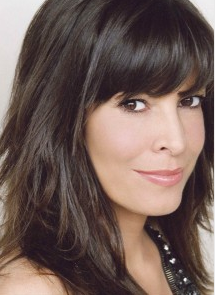 Guest blog by my former client, actress, writer, blogger and consultant Dufflyn Lammers
Guest blog by my former client, actress, writer, blogger and consultant Dufflyn Lammers
Yes, the right photographer is a huge piece of the puzzle.
BUT, you as the actor, must also be prepared in order to get a *Great headshot.
What’s the difference between an okay headshot and a great one? Auditions! You’ll know you have a *Great headshot if it gets you in the door, if it makes people want to meet you.
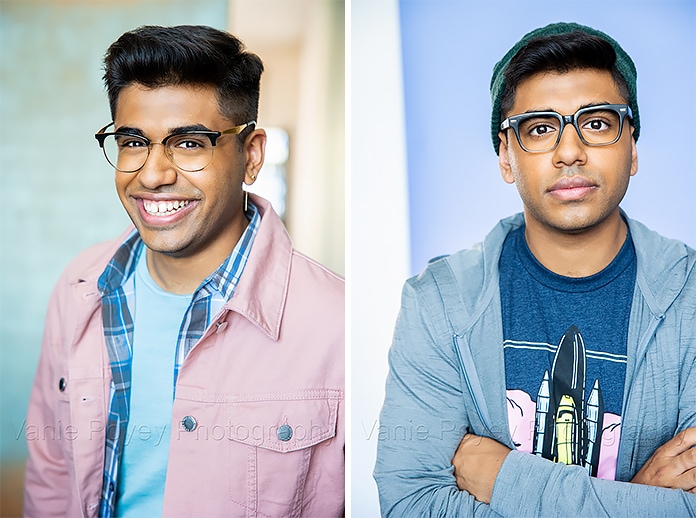
Achintya Panday: Urban Hip / Gamer
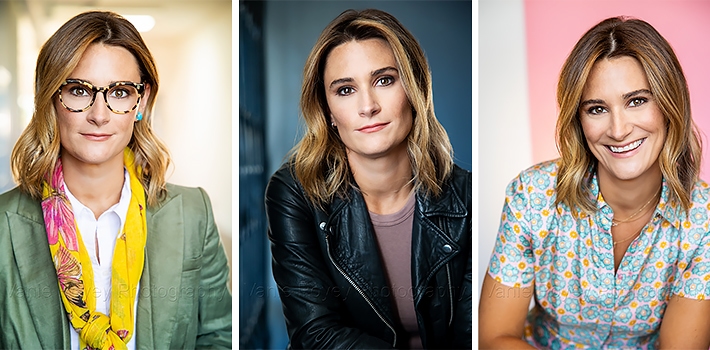
Bonnie Efird: Teacher / Heroine / Best Friend
AN AVERAGE HEADSHOT MIGHT LOOK NICE, even beautiful, but a *Great headshot has an energy that pulls people in.
It’s the same thing that great film actors are able to do with the camera– they make it come to them, it communicates enough of who an actor is, and yet it leaves room for interpretation. How do you do that?
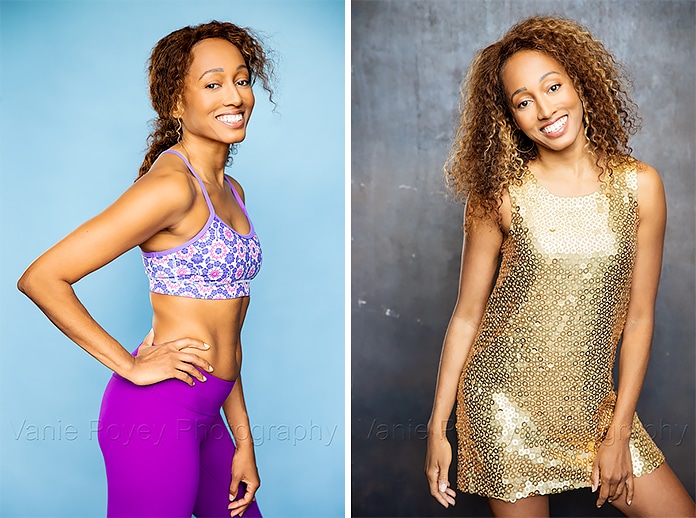
Char Sidney: Fitness / Girls’ Night out
1. It’s all in the eyes. This is the most important aspect of a *Great headshot. Your eyes must have energy, thought, activity, emotion behind them that beckons to the onlooker.
What they say EXACTLY depends on the type of parts you want to audition for. If you’re a Femme Fatale type, then it’s something like “Hey there stranger…” If you’re an action hero type then it’s maybe “I’ve got this.”
What this means is that while the photographer is taking your photo, you should be ACTING, not MODELING. You don’t have to be speaking to be acting. You can be doing a “silent solo,” as Stephen Book used to call it, where you engage in an active inner monologue without speaking.
Or, if it works better for you, go ahead and speak your monologue or a scene, talk to the photographer, but let there be life in your body and your EYES.
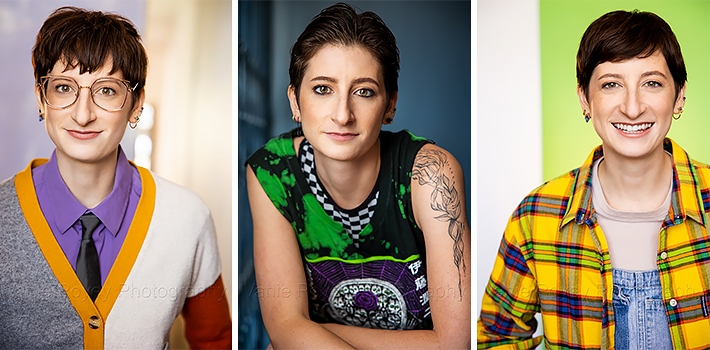
Dahlya Glick: Creative Tech / Musician / Hipster
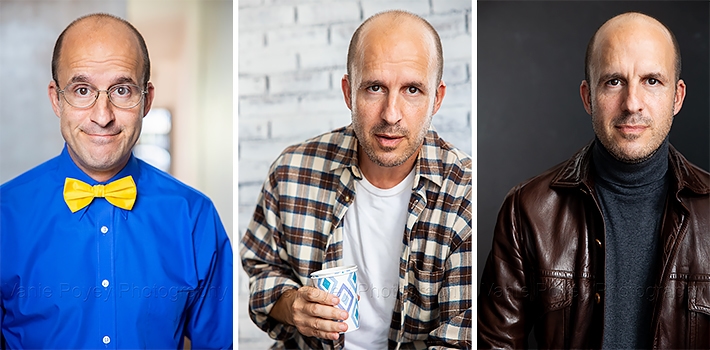
Gary Teitelbaum: Scientist / Blue Collar / Anti- Hero
2. Know who you are. If you know the types of parts you are likely to play, you can come in character to your photoshoot.
I don’t mean go out and buy an LAPD uniform because you play cops all the time. I DO mean that if you play cops, you can have the body language of a police officer in your headshot– squared shoulders, chest out, at attention.
And if you play cops, you probably also play military, thugs, maybe even villains.
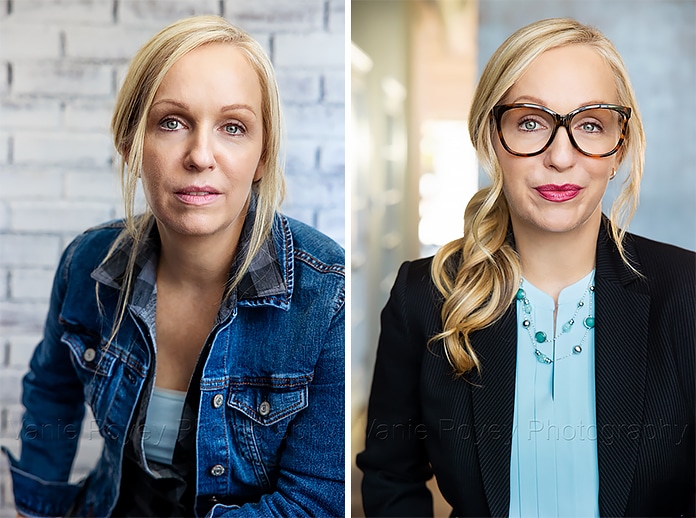
Kathy Grasheck: BBQ Mom / Lawyer
So how can you dress in a way that SUGGESTS all these roles are in your wheelhouse? Maybe a dark blue or green or black t-shirt? And maybe your attitude and body language is “I’ve got this” like a hero, but you’re thinking, “And you don’t want to piss me off.” So it’s layered, like your performances will be.
This picture should represent probably at least the 3 main types you can play.
NOW, you must be willing and prepared to communicate who you are (as an actor) to the photographer. If you’re one of my Act Now clients, look back at the TYPES I PLAY and the TEASER we created.
If you’re not, use your “logline” if you have one from Lesley Khan’s class, or your essence statements from Sam Christiansen. Be comfortable talking to the photographer about the parts you are marketing yourself for so they can help you get a *Great headshot!
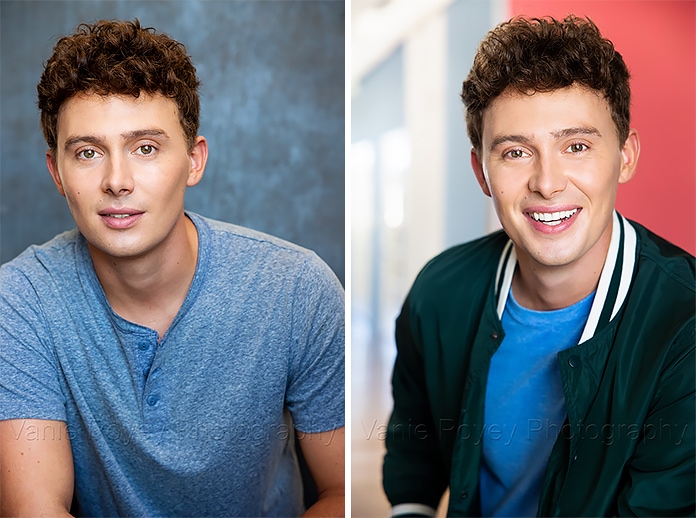
Jordan Dyck: Love Interest / Jock
3. Now you are ready to research photographers.
My first suggestion: DO that research. DON’T be lazy. You will save yourself money and heartache and possibly years of spinning your wheels. You can look at websites, you can see books for various photographers at REPRODUCTIONS in Studio City (also, in my opinion, the best place to print).
Also, ask the actors who have what you want (a *Great headshot), who took theirs. Once you find AT LEAST 3 photographers whose work you like, and you’ve seen their websites, call them on the telephone.
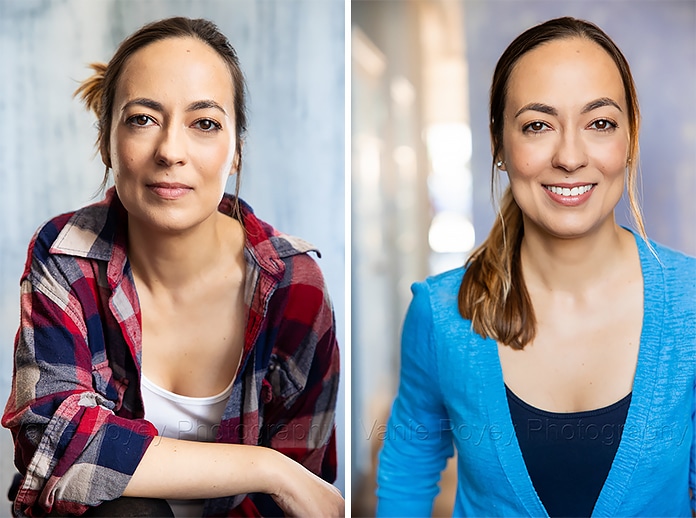
Neda Armstrong: Blue Collar / Suburban Mom
ASK THEM WHAT THEIR PROCESS IS LIKE– how do they generally work with actors to get the best out of them? Do they use natural light or studio light? Do they have an in-house makeup artist? Do they shoot digital or film? Can you bring your own if you want? Can you bring some music?
Now, if you like what you hear, ask if you can meet with the photographer for a quick 5 minutes. The idea is that you can see if you jibe well together. Nothing sucks more than showing up on the day of your shoot and discovering that the photographer’s energy feels yucky to you–they’re type A and you’re type B– it’s just not a match. Perhaps that sounds too airy-fairy, but we’re actors, right?
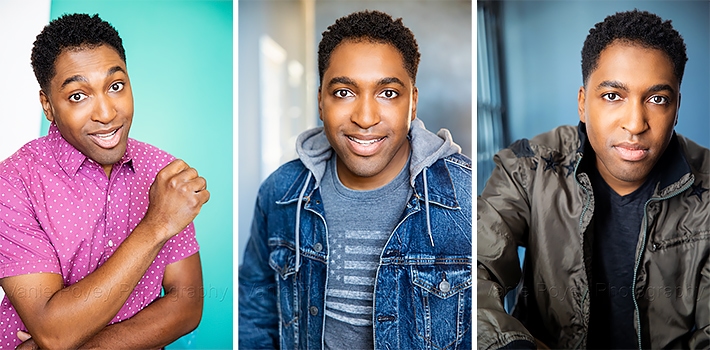
Kenny Copeland: Student / Hip Urban / Hero
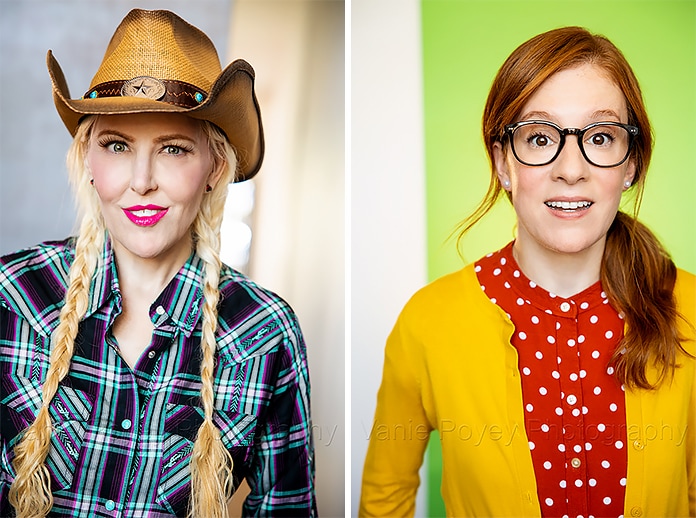
Tamara Cimmerian: Western / Tracy Dye: Student
4. Don’t rush. Not in your research, not in your preparation, not in your shoot, not in choosing the final photo, not in the printing.
BE PRESENT.
You can help yourself relax by setting a date where you’ll have plenty of time to rest the night before, and you won’t have to race to get to the location. Plan ahead– you don’t want to shoot in the middle of August in LA when it’s hot as hell if you’re shooting outside; you’ll be all sweaty and gross.
And make sure there aren’t nine million actors also scheduled before and after you (if at all possible), so the photographer is not rushed either. This may be tough with the popular ones, but if you schedule for a less busy time of year (say, December) you’ll have more wiggle room.
5. Choose Wisely… CLICK HERE TO READ MORE ON DUFFLYN’S BLOG.
___
I love helping you by putting out this free information (often written on weekends and evenings) so please help me spread the word by commenting and or sharing this post on your social feed!🙏🏻
0 Comments